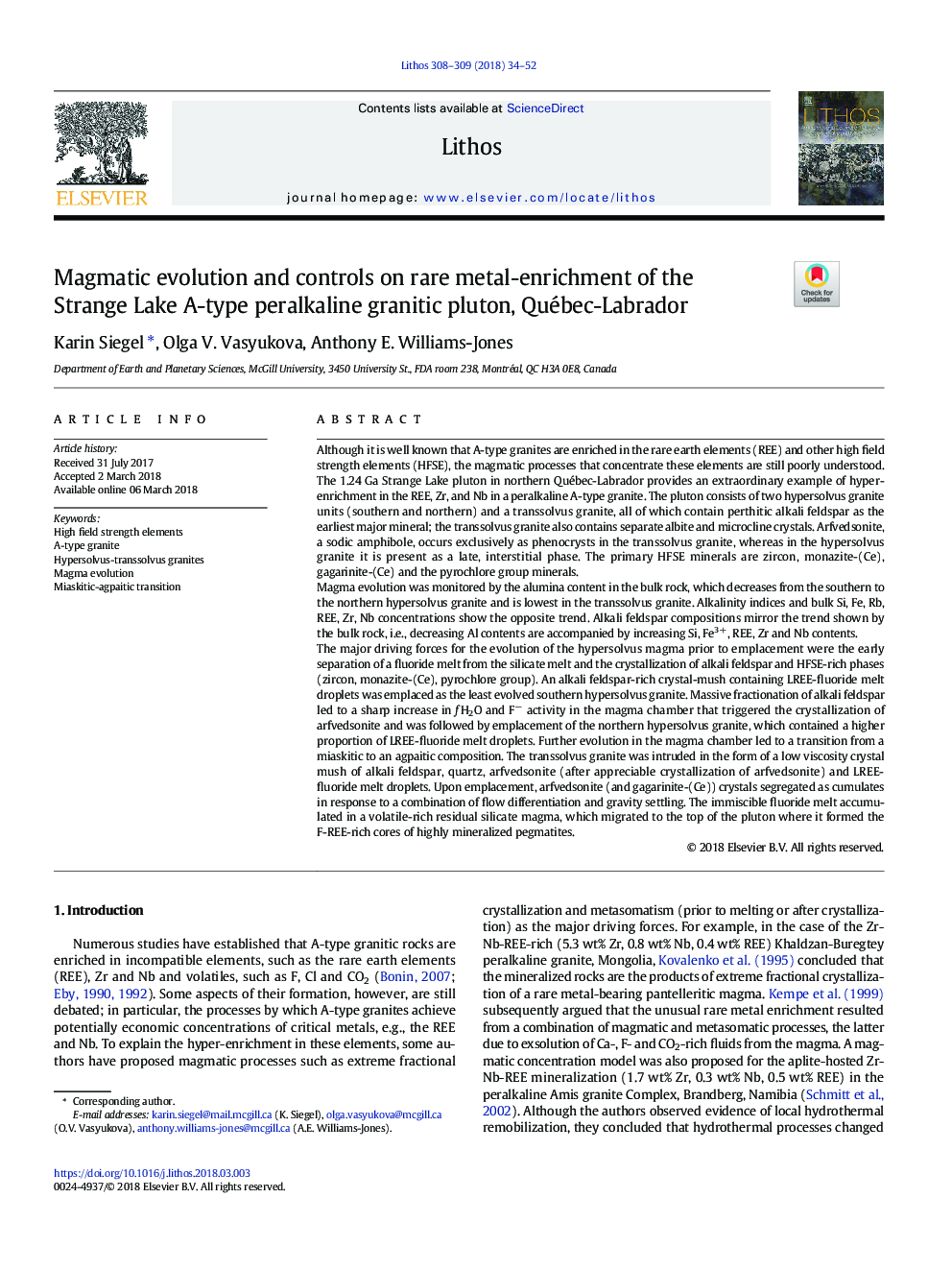| Article ID | Journal | Published Year | Pages | File Type |
|---|---|---|---|---|
| 8911634 | Lithos | 2018 | 19 Pages |
Abstract
The major driving forces for the evolution of the hypersolvus magma prior to emplacement were the early separation of a fluoride melt from the silicate melt and the crystallization of alkali feldspar and HFSE-rich phases (zircon, monazite-(Ce), pyrochlore group). An alkali feldspar-rich crystal-mush containing LREE-fluoride melt droplets was emplaced as the least evolved southern hypersolvus granite. Massive fractionation of alkali feldspar led to a sharp increase in ÆH2O and Fâ activity in the magma chamber that triggered the crystallization of arfvedsonite and was followed by emplacement of the northern hypersolvus granite, which contained a higher proportion of LREE-fluoride melt droplets. Further evolution in the magma chamber led to a transition from a miaskitic to an agpaitic composition. The transsolvus granite was intruded in the form of a low viscosity crystal mush of alkali feldspar, quartz, arfvedsonite (after appreciable crystallization of arfvedsonite) and LREE-fluoride melt droplets. Upon emplacement, arfvedsonite (and gagarinite-(Ce)) crystals segregated as cumulates in response to a combination of flow differentiation and gravity settling. The immiscible fluoride melt accumulated in a volatile-rich residual silicate magma, which migrated to the top of the pluton where it formed the F-REE-rich cores of highly mineralized pegmatites.
Related Topics
Physical Sciences and Engineering
Earth and Planetary Sciences
Geochemistry and Petrology
Authors
Karin Siegel, Olga V. Vasyukova, Anthony E. Williams-Jones,
